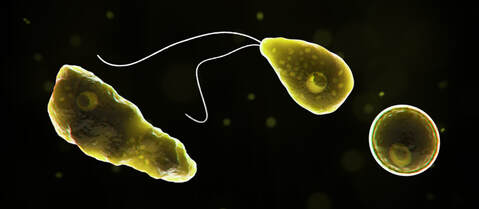|
About Naegleria fowleri Naegleria fowleri was first recognized as a human pathogen in 1965. Infections with N. fowleri usually result in a brain disease known as Primary Amoebic Meningitis (PAM). Although infections are rare, the organism is commonly present in the environment and has a fatality rate of nearly 100 percent. Drinking water with N. fowleri is not a risk to humans, as the organism cannot infect hosts through the intestinal tract. The route of infection is via nasal passages, requiring water to enter the nose. Water that is heated or stagnant in storage tanks, distribution lines of public systems or premise plumbing can provide prime breeding grounds for the pathogen. N. fowleri exposure sources in previous cases include accidental inhalation, such as while bathing or swimming, or intentional introduction of water in the nose (i.e., via sniffing water during religious practices and neti pots used to flush sinuses) |
Symptoms:
|
Treatment
Naegleria can be removed from potable water sources via submicron filtration, chlorination, and ultraviolet light. Point-of-use (POU) filters rated for cyst removal are expected to be effective for removal and should be applied for risk reduction.
The CDC recommends that potable water intentionally used in the nasal passages should be boiled for three minutes. Otherwise, use distilled, bottled sterile, or water filtered with a one-micron filter.
Naegleria can be removed from potable water sources via submicron filtration, chlorination, and ultraviolet light. Point-of-use (POU) filters rated for cyst removal are expected to be effective for removal and should be applied for risk reduction.
The CDC recommends that potable water intentionally used in the nasal passages should be boiled for three minutes. Otherwise, use distilled, bottled sterile, or water filtered with a one-micron filter.
Related Articles
- 01/2006 Newly Identified Tap Water Sources of Pathogenic Amoeba [Link]
- 05/2012 Waterborne Pathogens: Emerging Issues in Monitoring, Treatment and Control (Part 3) [Link]
- 11/2013 US Public Water Supplies: First Positive Confirmations of Deadly Amoeba [Link]
- 08/2014 Threat Assessment of Free-Living Amoeba in Drinking Water [Link]




